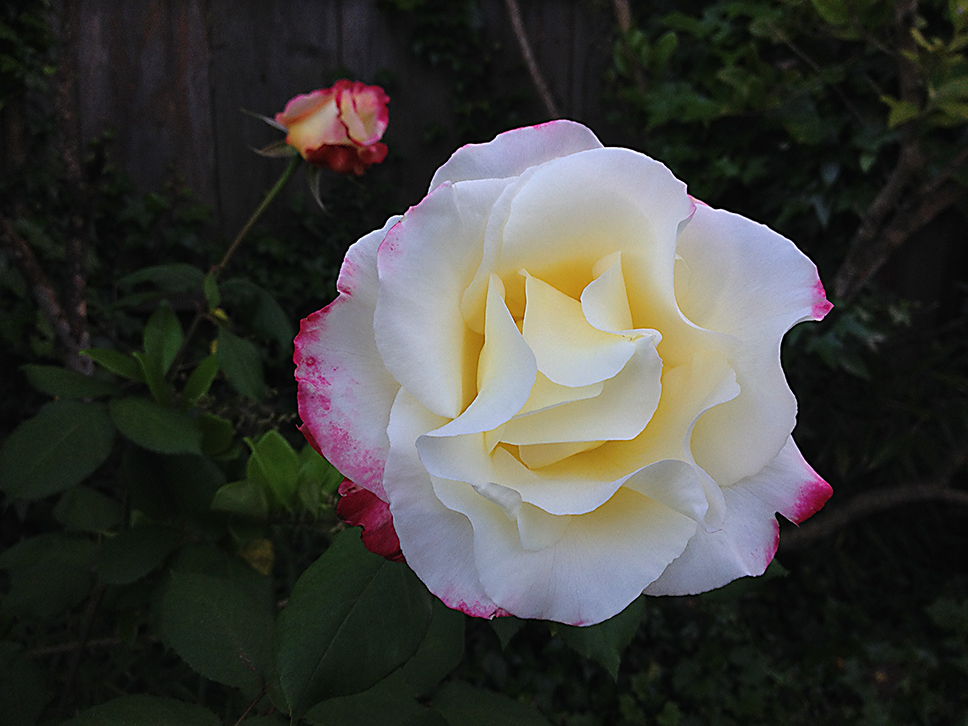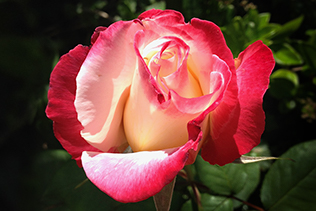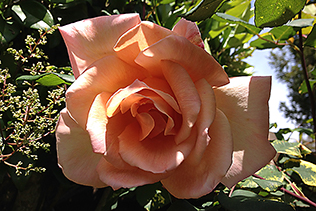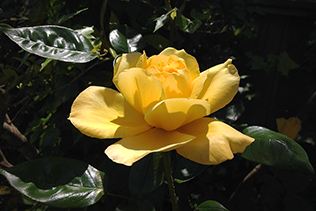
GreenWise Gardening 2017
“Which is loveliest in a rose? Its coy beauty when it’s budding, or its splendor when it blows?”
– George Barlow
– George Barlow
4/23/17:
I have roses! The long wait through a chilly winter is over, and now five of my rosebushes are blooming. My favorite are the yellow-cream-white flowers edged with pink and red. This one’s a strong-branched bush that’s been in the yard since before I moved in, 16 years ago. Another rosebush of similar age is taller than me and branches out mostly at the top in a tree-like way. It has the advantage of a full-sun spot in the yard, and produces more blooms than any other in most years: a range from creamy white to pale pink to peach. These two, and a bright pink variety, are planted in the ground near equally long-established privet hedges and jasmine.
Over the years, I’ve introduced several rosebushes in containers. Currently I have two bright yellow varieties, one magenta/red full-sized bush, and one in miniature size; and the newest arrivals, purple and coral varieties, which have yet to form buds.
The trickiest part of caring for these lovely flowering plants in springtime is remembering to apply insect and disease repelling sprays to the leaves in between rainy days. This will get easier as the weather becomes drier, and as days grow longer, so I can spend more time out in the yard after work. As far as proper “feeding” of the roses, my experiments with soil additives over the past few months have yielded great results: the manure tea, bloom-boosting organic fertilizer, and homemade compost do seem to be encouraging larger blooms and stronger stems.
Over the years, I’ve introduced several rosebushes in containers. Currently I have two bright yellow varieties, one magenta/red full-sized bush, and one in miniature size; and the newest arrivals, purple and coral varieties, which have yet to form buds.
The trickiest part of caring for these lovely flowering plants in springtime is remembering to apply insect and disease repelling sprays to the leaves in between rainy days. This will get easier as the weather becomes drier, and as days grow longer, so I can spend more time out in the yard after work. As far as proper “feeding” of the roses, my experiments with soil additives over the past few months have yielded great results: the manure tea, bloom-boosting organic fertilizer, and homemade compost do seem to be encouraging larger blooms and stronger stems.
Clicking on the small images below will bring up a larger version.
My crocuses and tulips never bloomed. I’d expected them in February or March, and was holding out hope they could still do their thing in April, but although 6 crocus bulbs (planted in 3 different areas) and one tulip formed leaves, there haven’t been any flowers. I suppose this is due to the past months being colder and rainier than an average year in our region. I’m wondering what further aberrations to expect during the rest of the growing season.
I’m certainly dealing with more mud, moss, humidity, and lack of sun than in other recent springs; but along with these drawbacks there are far greater benefits. It’s not only a fine year for camellias, wild leeks, and the emerging roses, but plants I’ve dismissed in the past as poor performers are doing quite well this April. The escallonia, part of a hedge in front of our bedroom window, is growing thicker and the leaves are a deeper green. I hope to see this bloom soon, attracting bees. The ferns, evergreens, and coniferous trees also apppreciate all this excess precipitation. I’ve probably been under-watering them for years. There are new branches and cones on the Ponderosa pine outside our living room window; the size and complexity of this tree seems to have grown every time I study it.
I’m certainly dealing with more mud, moss, humidity, and lack of sun than in other recent springs; but along with these drawbacks there are far greater benefits. It’s not only a fine year for camellias, wild leeks, and the emerging roses, but plants I’ve dismissed in the past as poor performers are doing quite well this April. The escallonia, part of a hedge in front of our bedroom window, is growing thicker and the leaves are a deeper green. I hope to see this bloom soon, attracting bees. The ferns, evergreens, and coniferous trees also apppreciate all this excess precipitation. I’ve probably been under-watering them for years. There are new branches and cones on the Ponderosa pine outside our living room window; the size and complexity of this tree seems to have grown every time I study it.


